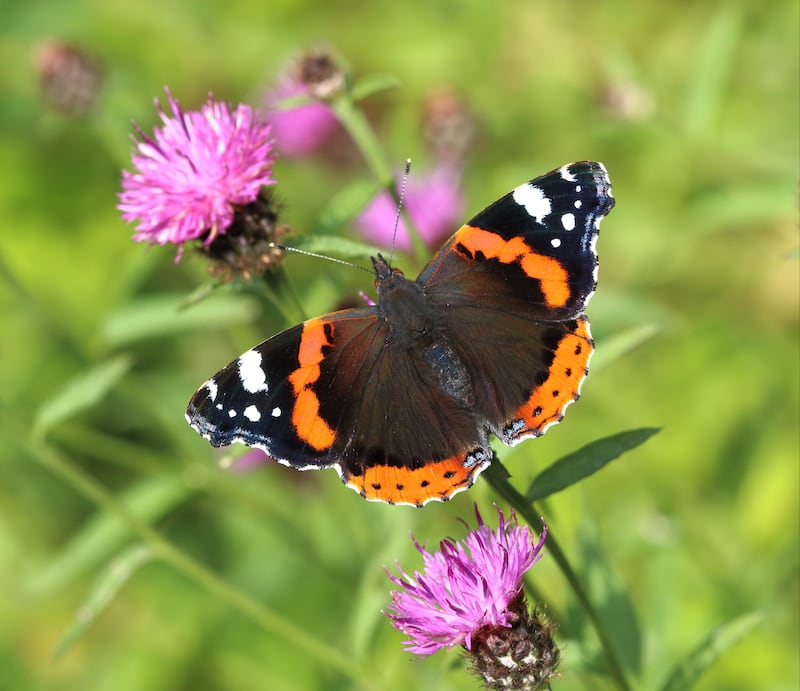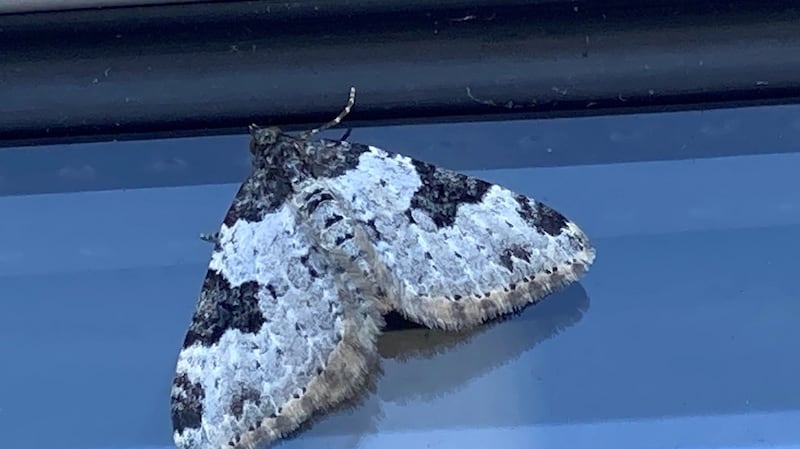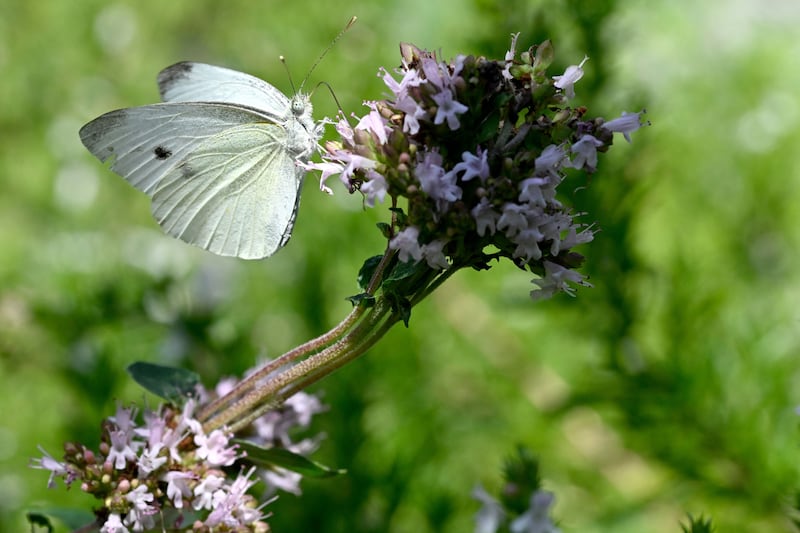It’s at this time of year that our little farmhouse begins to be love-bombed by butterflies, which flutter into its rooms through open windows to perch on the centuries-old walls and bask on its sunny windowsills. They are small tortoiseshells, a common species easily identified by the tiger-like stripes and series of tiny, pale blue dots stippled along the edges of its dark-orange, paper-thin wings. In early autumn the adults go in search of somewhere safe to overwinter, during which time our house is strangely irresistible to them. Clearly the building has always had this special charm. When we first bought it, its old, sun-filled rooms were filled with their tiny, dusty remains, poignant reminders of summers long gone.
Fascinatingly, according to the butterfly expert Jesmond Harding, there’s evidence to suggest that the small tortoiseshell has some form of spatial memory, with an ability to locate and return to sites that are significant to it. The female, for example, will return to the original location of the specific nettle plant on which she laid her eggs, even if that plant is moved to another part of the garden.
Perhaps the butterflies that flutter into our house every September share some similar sort of imprinted genetic memory of it as a safe place in which to overwinter. Unfortunately this isn’t the case any more, not only because of the recently installed central heating (heat disrupts their hibernatory patterns), but also because our two cats take a greedy delight in swiftly catching and devouring them. Now, each time I catch one in my hands to release it safely back outdoors, wings fluttering anxiously, I find myself explaining to it apologetically that times have changed.

The small tortoiseshell is just one of many species of butterfly that can be seen still visiting Irish gardens at this time of year to feed on nectar-rich flowers, many of them in preparation for hibernation or migration. Others include the peacock, red admiral, cabbage white, brimstone, speckled wood, meadow brown, comma, and holly blue, all of which I’ve spotted in recent weeks.
READ MORE
Not as easy to identify are Ireland’s 1,500 species of moth, both day and night-flying, some of them tiny, many of which can be found in our gardens and allotments. Many of these have wonderfully odd names including the white ermine, dark arches, setaceous Hebrew character, heart and dart, rosy rustic, common rustic, large yellow underwing, and – I kid you not – the uncertain (accurate identification of the latter requires careful dissection of its genitalia, hence its intriguingly strange name). To observe them on the wing in your own garden, suspend a bright light over a white sheet or blanket on a dry, warm night in summer-autumn.
Many of Ireland’s moth species are known to visit the flowers of species of plants unattractive to butterflies or bees, making them critical to the process of pollination and seed setting both in our gardens and in the wild. They’re also an important food source for Ireland’s bird and bat populations. And yet, as is the case for Ireland’s butterflies, a significant percentage are threatened with extinction as a result of chemical pollution as well as loss or degradation of habitat.

The good news is that as gardeners, we can do a lot to support these vulnerable pollinating insects, from reducing or avoiding the use of toxic garden chemicals and limiting our use of hard landscaping, to recognising the importance of providing different natural or semi-natural habitats within our gardens where native wild plants and insects can flourish. Another obvious way is by growing a wide range of trees, shrubs, perennials, biennials, annuals, herbs and climbers to help provide both the adults and larvae with food and shelter. That may all sound rather complicated but at its simplest, all it asks is that we be a little less tidy-minded. So, it could mean leaving the faded flower stems in the flower border in situ until spring, for example, or deciding not to spray that patch of nettles growing along the edges of the garden with weedkiller or allowing those eddies of fallen autumn leaves to lie in a forgotten corner over winter. In these small but significant ways, we can leave space for mini habitats to evolve.
Their many beneficial roles aside, it’s fair to say that there are also some species of moths and butterflies that can be destructive in the garden or allotment, and even a few that can pose a potential health risk. Examples include the larvae of the codling moth, which can damage apples and pears ripening on trees at this time of year by tunnelling into the fruit. Another is the large lime-and-green caterpillars of the box tree moth (Cydalima persimilis), which overwinter in dense weblike cocoons concealed within box hedging and topiary before emerging in spring to feed voraciously on the foliage and stems, quickly defoliating plants.
The brown-grey caterpillars of the oak processionary moth contain a toxin known as thaumetopoein and pose a serious health threat to humans or animals who come into contact with them
Likewise the oak processionary moth (Thaumetopoea processionea), another very recent arrival in this country whose larvae predominantly feed on species of oak (Quercus), poses a threat to the country’s tree populations. That particular threat aside, the tiny white hairs that cover its brown-grey caterpillars also contain a toxin known as thaumetopoein and pose a serious health threat to humans or animals who come into contact with them or inadvertently inhale them, resulting in a variety of ailments including skin rashes, conjunctivitis and asthma.
Other moth species that are traditionally regarded as garden pests, many of which are very specific in terms of the genus or species of host plant that they target, include the pea moth (Cydia nigricana), plum moth (Grapholita (Cydia) funebrana), and leek moth (Acrolepiopsis assectella). Damage can sometimes be significant and is usually a result of large numbers of caterpillars feeding on the host plant.

Nature-friendly controls vary according to the particular species and only need to be used when there’s a real threat of substantial damage. One way to do this is by using pheromone traps in late spring/early summer (these need to be specific to the particular species of moth or butterfly), which use a synthetic version of a sex-pheromone to attract the males. Selective biological controls are also organically acceptable and can be very effective, but only if and when carefully targeted, correctly timed and thoroughly applied.
A well-known example is Bacillus thuringiensis, which isn’t a preventative but instead should be very thoroughly sprayed on to the leaves of the affected plant on a cool, dry, shady day when the caterpillars have recently hatched, but before they have caused serious damage. It is available to order online from Cork-based fruithillfarm.com and Dublin-based nad.ie, and can be used to control infestations of a wide variety of destructive species of moths and butterflies including box tree moth, tortrix moth, and the cabbage white butterfly.
But the oak tree processionary moth is an entirely different matter. If you’re unlucky enough to spot its nest on the trunk or branches of an oak tree, keep well away from the afflicted tree and report the sighting immediately to the Department of Agriculture.
This week in the garden
Continue to save ripe seed of many kinds of trees, shrubs, perennials, biennials and annuals, making sure to do so on a dry, still day. Ripe seed can be placed in individual bowls or containers and left somewhere under cover to gently dry out before being stored in labelled paper envelopes.
Plant out late spring/early summer flowering biennials such as wallflowers, honesty and sweet William into the plants’ final growing location outdoors for strong, healthy plants next year, making sure to prepare the ground well in advance.
Dates for your diary
Monday, September 25th, (9.30am-5pm), Ballymaloe Cookery School, Organic Farm & Gardens, Shanagarry, Co Cork, an intensive one-day workshop supported by NOTS and hosted by Madeline McKeever, the organic seed producer and founder of Brown Envelope Seeds, on all aspects of seed saving and the importance of seed sovereignty. ballymaloecookeryschool.ie
Tuesday, September 26th, (7pm): White Sands Hotel, Portmarnock, Co Dublin, D13 W7X2, an illustrated talk by the renowned American plantsman, nurseryman and author Dan Hinkley on behalf of Howth & Sutton Horticultural Society. This ticketed event (€15) must be booked in advance. hshs.ie
Thursday, September 28th (8pm): Northridge House, St Luke’s, Castle Rd, Mahon, Co Cork, T12H9070, A Year on the Farm, a lecture by Dave Hardy of Esker Farm Daffodils on behalf of Cork Alpine Hardy Plant. All welcome, admission €10
Dan Hinkley will also be one of the guest speakers at Kells Bay Gardens’ Southern Symposium (Friday 29th-Sunday 30th September) along with Seamus O’Brien, Bleddyn and Sue Wynne-Jones, Jack Aldridge and Ken Cox.
Continuing until October 1st: the Walled Garden, Mutton Lane, Tibradden, Dublin, D16 R972. Mount Venus Nursery’s annual autumn sale with a wide range of exceptional garden plants for sale at reduced prices, see mountvenusnursery.com






















